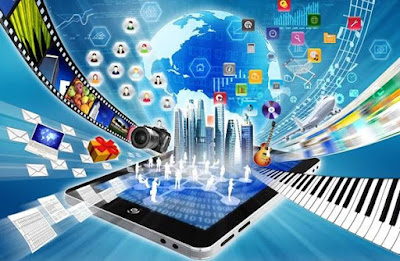PRE-HISTORIC PERIOD
At first humans developed information technology at this time serves as a system for the introduction of the forms that they know. They describe the information they get on the walls of the cave, about hunting and prey animals. At this time they began to identify objects that exist in the environment they live and represent it with the forms which they then painted on cave walls tempa.t they live, because of their ability to speak only about the form of voice grunts and hand gestures as a form of their initial communication at this time. Further development is created and use the tools that generate sounds and cues, such as drums, trumpets made of animal horn, or smoke signals as a means of giving warning of danger.
HISTORICAL PERIOD
2900 BC
The use of letters hierogliph on the ancient Egyptians. Hierogliph a language of symbols where each phrase is represented by different symbols. When combined into one will have a way of pronunciation and different meanings. Heirogliph form of writing and language is more advanced than Sumerian writing.
500 BC
Papyrus fibers are used as paper. Paper made from papyrus tree fiber that grows around the Nile is a medium for writing or media information that is more powerful and flexible than the clay tablets that were previously used as a medium of information.
105 M
The Chinese discovered kertas.Kertas discovered by the Chinese at this time is the paper that you know today. Paper is made from bamboo fibers are crushed, filtered, washed, then flattened and dried. The invention also allows the printing system is performed using a carving on a block of wood and covered by the ink or what we know today with a cap.
MODERN PERIOD
1455
The printing press that uses the letters are made of iron plate that can be changed in a frame made of wood was developed for the first time by Johann Guntenberg.
1830
Augusta Lady Byron wrote the first computer program in the world to work with Charles Babbage’s Analytical engine it uses. The tool is designed to be able to enter data, process data, and generate output in the form of a card. This machine is known as a form of the first digital computer, although the way it works is more mechanical than is digital, 94 years before the first digital computer ENIAC 1 is formed.
1837
Samuel Morse developed the telegraph and Morse code language with Sir Wiliam Cook and Sir Charles Wheatstone who sent electronically between two distant parties through the cable connecting the two places. Sending and receiving of this information can be sent and received at almost the same time this invention allows the information can be accepted and used widely by the people unhampered by distance and time.
1861
Moving images are projected onto a screen was first used as the precursor film is now in ancient times as the projector is growing step on the screen.
1876
was marked by figures who developed the Melvyl Dewey decimal system of writing.
1877
1) Alexander Graham Bell invented and developed the first time used the phone in general.
2) high-speed photography was invented by Edward Maybridge.
1899
Used in tape storage system (tape) the first magnetic storage but at this time is still analog not digital like the present.
1923
was marked by Zvorkyn creating the first television tubes.
1940
Commencement of the development of science in the field of information during World War 2, which is used for the benefit of sending and receiving of military documents that are stored in the form of magnetic tape.
1945
Vannevar Bush developed a coding system using hypertext.Pada this period the use of hypertext has been developed along with the development of website design is currently evolving.
1946
period of this technology in the world’s first digital computer ENIAC was developed although I have not so many users, but computer technology has been used certain agencies.
1948
Researchers at Bell Telephone developed the transistor.
1957
1) Jean Hoerni developed the planar transistor. This technology allows the development of millions and even billions of transistors incorporated into a small piece of silicon crystal.
2) USSR (Russia at the time) as the launching of Sputnik the first artificial earth satellite who served as a spy. In return the U.S. to form the Advanced Research Projects Agency (ARPA) under the authority of the Department of Defense to develop science and information technology in the military field.
1972
At this time Ray Tomlinson created the first e-mail program that is used to communicate over long distances using teks.E-mail can be said as electronic mail.
1973-1990
The term Internet was introduced in a paper on TCP / IP and then made the development of a network protocol known as TCP / IP was developed by a group of DARPA.Pada the 1981 National Science Foundation to develop a backbone called CSNET 56 Kbps capacity for each institution in pemerintahan.Kemudian in 1986, the IETF developed a server that serves as a coordination tool including: DARPA, ARPANET, DDN, and Internet Gateway.
1991
Now the business systems in the IT field first occurs when the CERN in overcoming operational costs a fee from its members.
1992
The establishment of the Internet community, and then introduced the term World Wide Web (WWW) by CERN.
1993
NSF established the InterNIC to provide Internet related services and data storage directories and databases (by AT & T), registration services (by Network Solutions Inc. ), and information services (by General Atomics / CERFNET).
1994
The growth of the Internet drove very fast and began reaching into all aspects of human life and a part that can not be separated from manusia.
1995
Public enterprises began to be allowed into the provider by purchasing network in this Backbone.Langkah began development of information technology especially the internet and research to develop systems and more sophisticated tools.








































